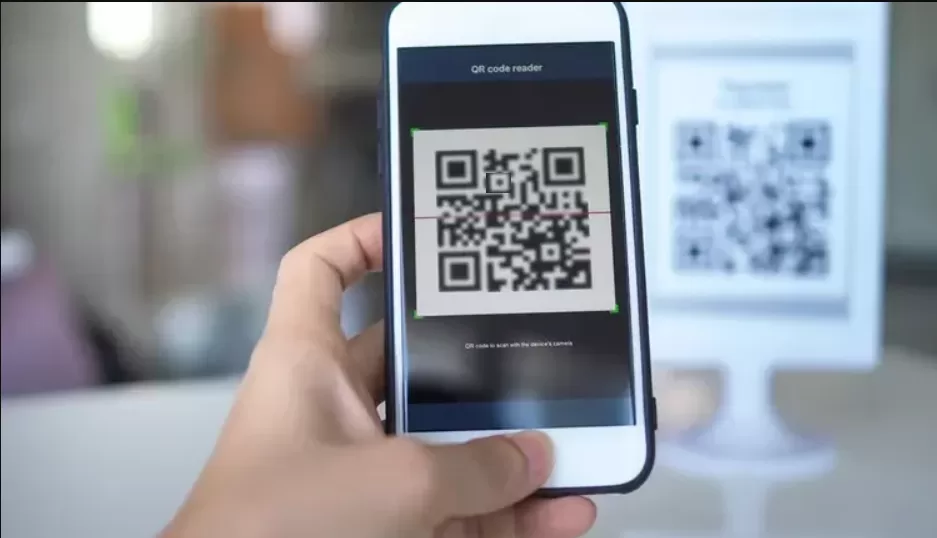The Pitfalls of Printed URLs: Why Dynamic QR Codes are the Better Option

The Role of QR Codes in Marketing
Convenience is king. Consumers expect instant access to information, and businesses are increasingly relying on printed packaging, brochures, and posters have to bridge the gap between the physical and digital realms. One tactic is printing URLs that direct consumers to a website. However, printed URLs come with their own risks.
The Challenges of Human Error
Let’s explore why traditional URLs on packaging and materials may be more of a liability than an asset—and why dynamic QR codes are a far better solution.
One of the most common and frustrating issues with printed URLs is the potential for human error in the link itself. Whether it’s an incorrect character, an accidental omission, or a misspelled word, a simple typo can render the link useless. In the case of physical packaging, correcting a typo on mass-produced items is virtually impossible without printing new batches, which can be costly and time-consuming.
In contrast, dynamic QR codes mitigate this issue entirely. Once a dynamic QR code is created, it can link to a URL that’s fully functional, even if you later need to change or update that URL. If a mistake is made, you can simply update the destination of the QR code without needing to reprint anything. This flexibility ensures that your customers always have access to the right content, without worrying about human error on your part.
Dead Links and Outdated URLs
Another significant drawback of printing static URLs is the risk of dead links or outdated domains. As websites evolve or brands rebrand, URLs can change. When you print a URL on packaging or materials, it’s fixed in stone—meaning if your website changes or your domain name shifts, that URL becomes obsolete. This can lead to frustrated customers who try to visit your link, only to be met with a 404 error page or worse, a competitor’s website.
Dynamic QR codes, however, allow you to update the link destination at any time. So, if your brand’s website moves, or if you launch a new product page, you can redirect the QR code to the correct URL instantly without the need to reprint your packaging. This capability gives you the power to keep your links fresh and functional without wasting resources on outdated materials.
Limited Space on Packaging
In many cases, especially with small products or compact packaging, space is limited. Printing a long, cumbersome URL can make the design feel cluttered and unappealing. Not only does this affect the aesthetic appeal of your packaging, but it also adds unnecessary complexity for your customers, who are more likely to forget or mistype a lengthy URL.
A QR code, by contrast, is compact and visually appealing. It allows you to redirect customers to a wealth of information—videos, product pages, reviews, special offers—without taking up too much space. It streamlines the customer experience and makes accessing your content far easier.
Engagement Tracking
Another downside of static URLs is that they don’t provide any meaningful tracking or data on consumer behavior. Once a printed URL is out in the world, it’s impossible to know how many people actually visited the site, when, or from where. This lack of visibility makes it difficult to evaluate the effectiveness of your packaging design or marketing materials.
Dynamic QR codes, on the other hand, come with built-in tracking capabilities. By using a dynamic QR code, you can monitor engagement metrics, such as how many people scanned the code, what device they used, and where they were located. This valuable data helps you assess the success of your campaigns and make data-driven decisions for future marketing efforts.
Accessibility Challenges
Printed URLs can also present accessibility challenges for certain consumer groups, particularly those with visual impairments. Small fonts or unclear text can make it difficult for these customers to accurately read and type in a URL. While using larger fonts or clearer typefaces can help, printed URLs still require customers to actively engage with the text—something that’s not always ideal in today’s fast-moving world.
QR codes are far more accessible in this regard. Customers can simply scan the code with their phone, eliminating the need to physically type out a URL. QR codes can also be read aloud by screen readers for those with visual impairments, improving the overall accessibility of your marketing materials.
Inconsistent User Experience
The experience of visiting a printed URL isn’t always consistent. Consumers may attempt to type in a URL on their phone, only to encounter errors due to misspellings, or they might struggle with accessing the page on their device due to issues like slow load times, security concerns, or browser compatibility.
With QR codes, the experience is far smoother. Scanning a QR code leads customers directly to the intended content with a single tap, bypassing any potential issues with typing, spelling, or browser compatibility. This seamless interaction contributes to a more positive and efficient customer experience.
Time-Sensitive Landing Pages
Marketing campaigns and promotions are often time-sensitive and can change quickly. A static URL printed on packaging or promotional materials is limited in its ability to adapt to these changes. For example, if you launch a limited-time offer and want to direct consumers to a specific landing page, you’re stuck with whatever URL you printed, even if the campaign ends or needs updating.
Dynamic QR codes offer incredible flexibility in this area. You can change the destination of the QR code at any time, allowing you to easily pivot your campaigns without any need for new print runs. Whether you’re promoting a new product, updating an offer, or changing the destination to reflect seasonality, dynamic QR codes give you the ability to adapt in real-time.
The Case for Dynamic QR Codes
Dynamic QR codes offer a far superior solution. They provide a flexible, trackable, and user-friendly alternative to printed URLs, ensuring your brand’s digital presence is always accessible and up-to-date. With the ability to update destinations in real-time, enhance accessibility, and provide valuable customer insights, dynamic QR codes can revolutionize how your brand interacts with customers—making them an essential tool for modern marketing.
Have Questions?
So, the next time you’re considering how to link to your online content, consider the benefits of a dynamic QR code—it might just be the smartest decision you make! And check out our other articles for more advice on specific industries and use cases.
